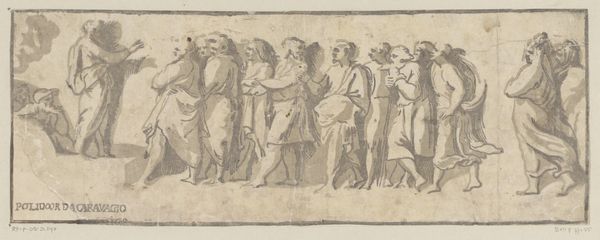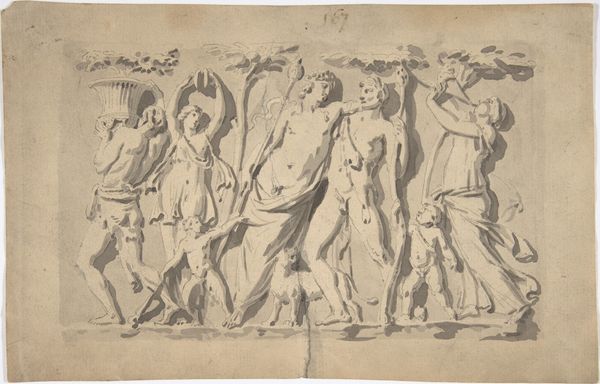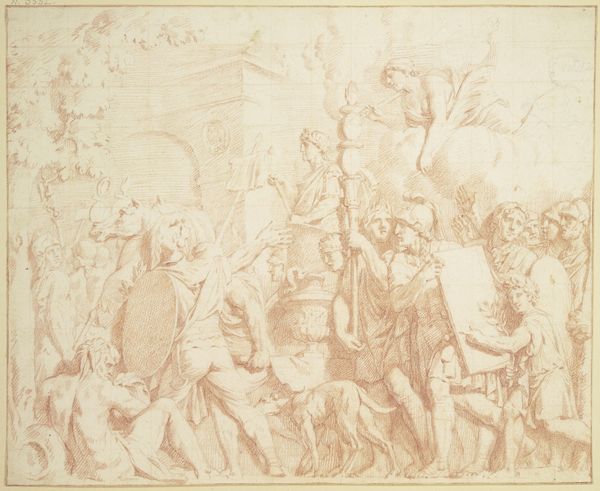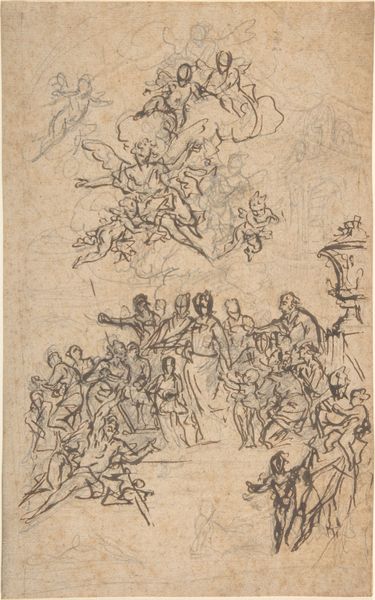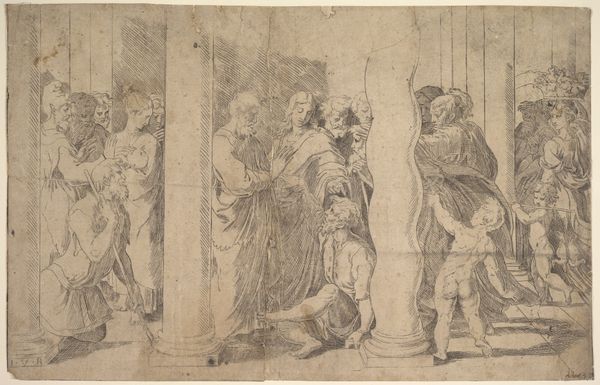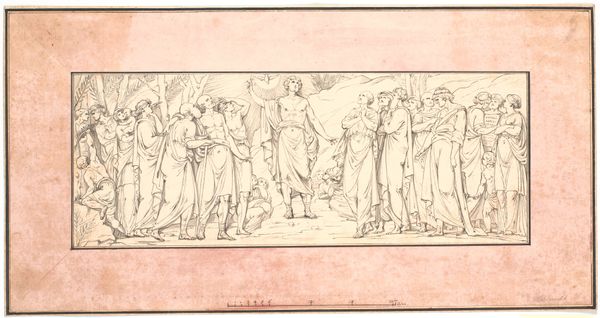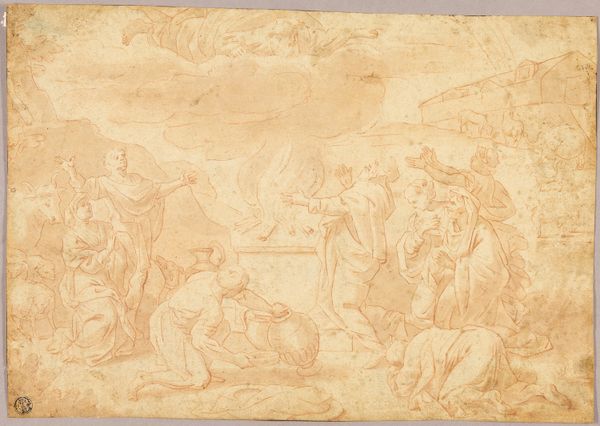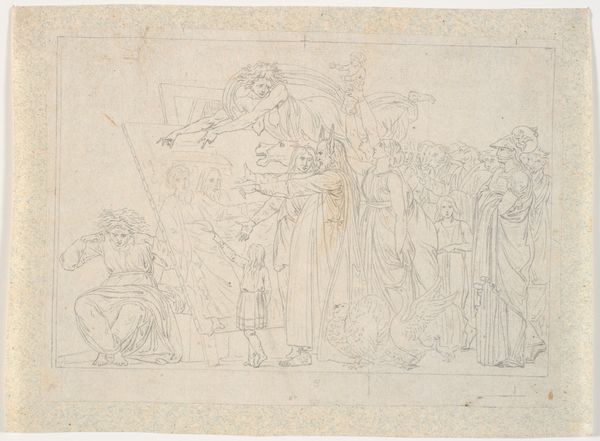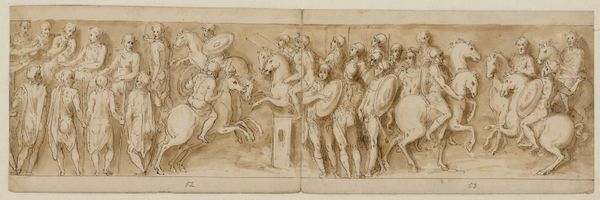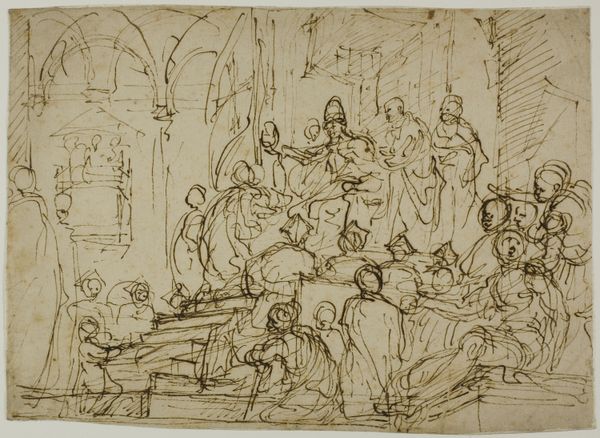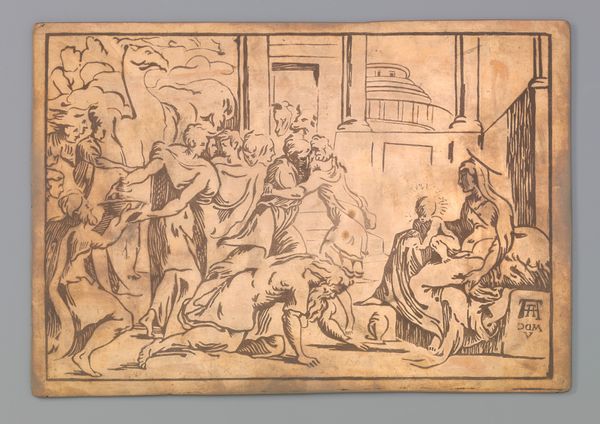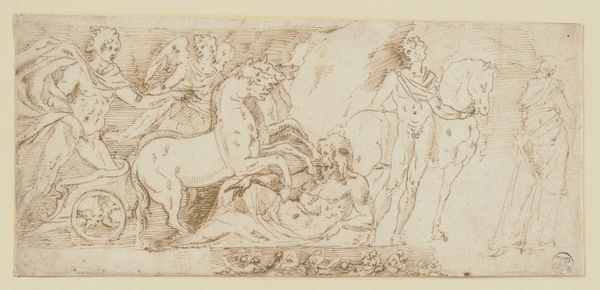
drawing, print, engraving
#
drawing
#
ink drawing
#
pen drawing
# print
#
figuration
#
history-painting
#
italian-renaissance
#
engraving
Dimensions: Sheet: 8 11/16 × 14 5/8 in. (22.1 × 37.2 cm)
Copyright: Public Domain
Editor: Here we have Ugo da Carpi's "The Death of Ananias Surrounded by Apostles," created around 1518. It looks like an engraving of some sort. What strikes me immediately is the almost chaotic energy of the figures; there's a real sense of drama. What's your take on this piece? Curator: Chaotic is a fantastic word for it. It's a historical scene captured with a Renaissance flair. Da Carpi, known for his chiaroscuro woodcuts—though this looks more like an engraving—is playing with light and shadow to heighten that drama you picked up on. Think about it, how does rendering death add even more weight? The contrast in light accentuates that this isn’t just any old passing but a divine reckoning! Editor: A divine reckoning...right. So, Ananias, from the Bible, I presume? Is this the moment he… well, drops dead for lying to the apostles? Curator: Precisely. He and his wife withheld money from the community and then lied about it. Bam! Instant consequences, rendered here for all to see. Look at the faces of the Apostles – the surprise. Do you see any of them with judgement, even malice, in their gazes? And Ananias, sprawled on the floor – notice how da Carpi uses lines to suggest not just death, but the expulsion of life. Like a marionette with cut strings! Editor: That’s… intense! I was so focused on the movement, I missed that detail of the expressions of the Apostles. How does this kind of imagery fit into the art of the Italian Renaissance? Curator: Religious narratives were HUGE. But this isn’t just decoration. This print, multiplied, could carry a message: transparency and community above all, or face a very immediate reckoning! But beyond moral teaching, it showcased Da Carpi’s mastery. How clever to capture a theological event into reproducible image! Editor: So it's art as propaganda, in a way? Wow. I’ll definitely look at Renaissance art differently now. Thanks! Curator: My pleasure. Consider what lessons are taught not through grand gestures, but rather, delicate lines.
Comments
No comments
Be the first to comment and join the conversation on the ultimate creative platform.
